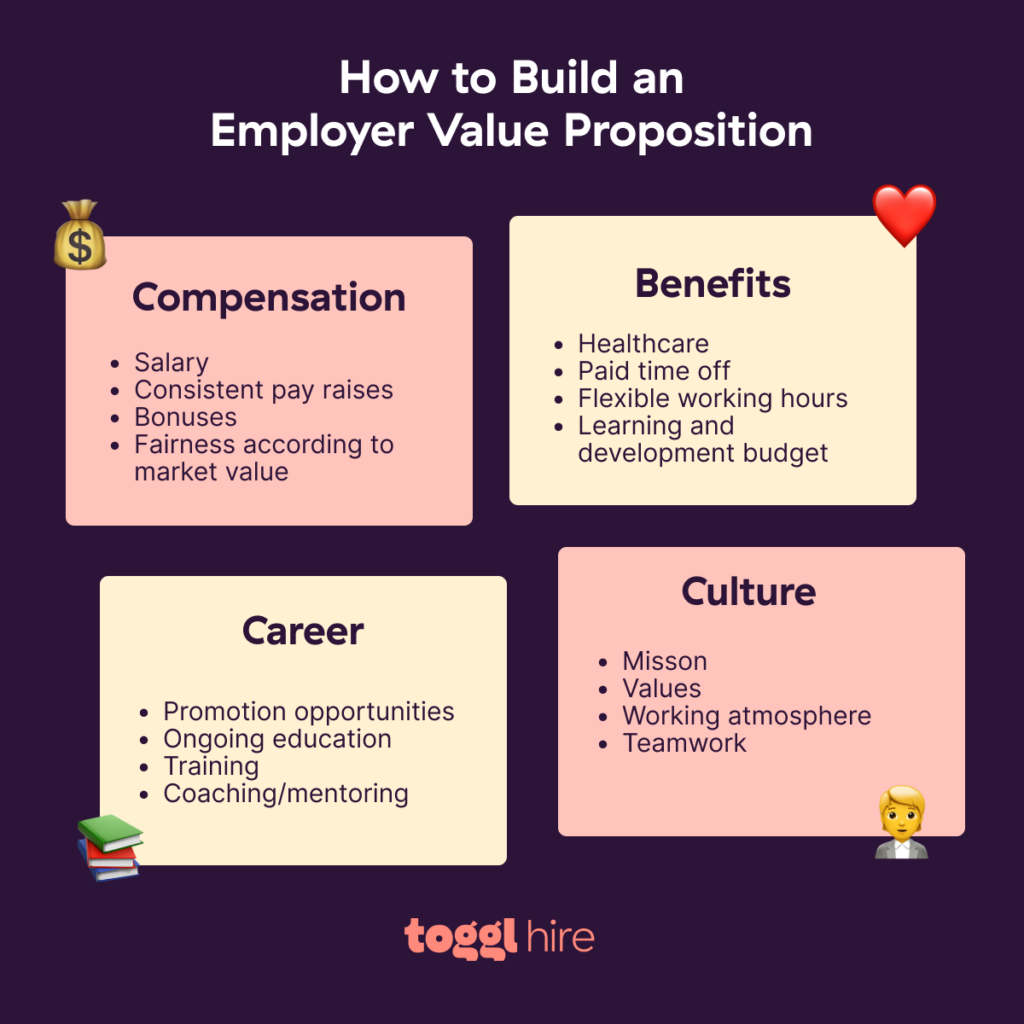No company wants to see their new hire underperforming. Obviously.
Mastering the recruitment funnel can help your talent acquisition team deliver higher-quality candidates and avoid bad hires. This strategic HR tool helps manage and foster a culture of continuous improvement across the entire recruiting process.
A recruitment or hiring funnel provides important insight into each recruitment stage, highlighting exactly where and how to adjust recruitment efforts to attract first-rate candidates.
Instead of focusing on just one portion, we’ll show you how to build a data-driven recruiting funnel that works.
By understanding the entire funnel and your core metrics, you’ll discover new and impactful ways to boost your hiring efforts.
TL;DR — Key Takeaways
A recruitment funnel is a framework that helps recruiters organize, manage, and improve their recruiting process by leveraging insights from data.
Using data is fundamental for successful recruiting funnels. Today’s hiring managers can measure how every stage of the funnel performs using recruitment metrics and apply that data to make fundamental, positive changes.
The hiring funnel has six core stages: awareness and attraction, application and screening, and selection and hiring.
In each stage, we share examples of the key recruitment funnel metrics every hiring team should follow, such as quality of hire and cost to fill.
An effective recruitment funnel helps quickly screen candidates using reliable, quantifiable methods. Skills assessments, in particular, are a superb tool for creating a data-driven recruiting process while improving the candidate experience.
What is a recruitment funnel?
A recruitment funnel is a framework recruiters use to manage the recruitment process strategically. It’s a metaphorical representation of the typical stages that candidates go through, from awareness and application to making the job offer and hiring successful candidates.
It’s also called a hiring funnel or recruiting funnel.

Just like a real funnel, you start wide, with a large number of mostly unqualified candidates. As the funnel gets narrower, the number of candidates gets smaller, narrowing down to a small pool of candidates that are best qualified for the job.
At the very end of the funnel, a single candidate is identified as the best fit for the job as a result of successful talent acquisition efforts.
Data and the recruiting funnel
Talent acquisition teams that place data at the center of their recruitment funnel find talent faster and more efficiently. A data-driven recruiting strategy means tracking crucial metrics from the very first contact with your business to the last.
According to LinkedIn research, recruitment teams with mature analytics practices are “2x more likely to improve their recruiting efforts and 3x more likely to realize cost reductions and efficiency gains.”
Put simply, by capturing recruitment data at each stage in the funnel, recruiting teams make better decisions.
For example, by analyzing your job ads data, you can learn where your quality candidates are coming from, such as through social media ads or job boards. Or, by keeping an eye on your application drop-off rate, discover whether your job requirements are too high, causing candidates to drop off before even entering the funnel.
To illustrate how important data can be in identifying and hiring the right candidates, consider this statistic:
The best developer at Apple is over 9x more productive than the average software engineer at other technology companies.
LinkedIn, Data-Driven Recruiting Report
The great news is that modern hiring tools automatically collect data on your behalf, so you can use historical data to your advantage before making your next big hiring decision.

The 6 core recruitment funnel stages explained
There are many types of hiring processes, and yours is probably unique in a certain way (as it should be). However, most hiring funnels have six core stages, where the most qualified candidates filter in from the top to reach the bottom.
Stage #1: Awareness
Fighting for more qualified candidates starts before they even hit “apply”. Building awareness means making yourself seen as a great place to work. In other words, investing in the employer brand.
At this stage, you should:
Use your talent team to establish a presence on social media
Create and update your profiles on LinkedIn and relevant review websites like Glassdoor
Create and update your About Us and Careers pages
Openly share the company’s mission, vision and values
Be transparent about the entire process of hiring in your company: how you choose employees and which criteria you apply
Visit online and in-person job fairs to present who you are in front of potential applicants

Building awareness is not a one-time thing or a week-long campaign. It’s a time-consuming process that can take months before the first results show. Choose a focus area, set a KPI, work hard on it, and watch as your quality of applicants increases.
Measuring awareness
You can measure how well your employer brand is performing in many different ways, including:
Social following: Tracking how many new followers you gain on various social media platforms
Branded search: Checking how many people search for your brand name and open roles at your company
Word of mouth: Tracking the source of qualified applicants and employee referrals to understand the strength of your employer’s brand

Top metrics to track in this stage of the funnel: Website traffic, source of traffic, engagement metrics (page views, bounce rate, time on page), social media metrics (impressions, views, likes, follows), brand mentions, company reviews, and others.
Stage #2: Attraction
Candidates know who you are, but how do you go from “aha” to job offers? If the first stage is all about casting a wide net, this second stage of the recruiting funnel is where you start getting more selective.
Start with the obvious:
Find where your candidates spend time (e.g., in online forums/communities, job boards, relevant social media profiles, and niche websites).
Create relevant job ads and job descriptions and promote them to this applicant pool.
Show them what is in it for them: your company culture, amazing employer brand, the talent they get to work with, compensation package, remote and hybrid work models, and more.
The job market is flooded with great opportunities, so find something that will make the position pop, like an attractive benefits package.
Starting the application process with a hiring test instead of a typical resume/cover letter combination is a proven way to better pique the interest of the best candidates.

Boosting interest
If your job ads get a lot of views, you’re off to a great start. But you also want to translate those views into great applications by doing some of the following:
Respond quickly to queries from interested candidates.
Have a good web presence across platforms where potential candidates spend their time.
Try to have very few negative candidate and employee reviews on sites like Glassdoor.
Top metrics to track in this stage of the funnel: Application rate, candidate drop-off rate, time spent on the application page, resume screening rate, the number of qualified applicants, conversion rate by source, job ad performance, and others.
Stage #3: Application
Any good recruitment dashboard will give you a ratio of views to applications. If you have a lot of views on your job ads but no applicants, something is not right.
By analyzing the data, you can find out how to get better viewer-to-applicant ratios. In general, some best practices to follow include:
Make the process simple and easy, e.g. instead of lengthy application forms, use a hiring test that takes 15 minutes to complete
Make the application mobile-friendly
Do not ask for a resume if they’ve already applied with their LinkedIn profile
Ditch the cover letter
Don’t ask too many additional questions
Gamify the process by using tools such as hiring tests
Explain what the next steps are and when they can expect to hear back
All of these contribute not only to better applicant numbers but also to an improved candidate experience. Besides high conversion rates from ads to applications, you can expect happy applicants to share their thoughts about your application process with people in their network.

Top metrics to track in this stage of the funnel: Application completion rate, application abandonment rate, time to complete application, the ratio of qualified/unqualified applicants, candidate feedback, source of completed applications, and others
Stage #4: Screening
This is the point to start converting your large pool of applicants into the final few for interviews.
Traditionally, hiring teams would go through piles of resumes, hoping to find gold nuggets in mounds of dirt. But thanks to data-driven recruiting, it’s now easy to reduce the number of applicants from 2000 to 20 in just a few clicks.
Tools such as Toggl Hire, a full-cycle hiring tool, can help you automate candidate screening. To highlight at a glance which candidates meet your minimum threshold for skills and real-world job performance, and invite them for an interview.

Skills assessments are an excellent way to determine whether a candidate will be successful in a role in the long term. Automated skills assessments in the screening process can help your team:
Speed up the screening process
Introduce unbiased, data-driven hiring practices
Create a fun and engaging candidate experience
Separate great applicants from great resume writers
In the long run, use data collection to influence metrics such as time to hire, turnover rate, and many others
Pre-recorded video interviews are another modern candidate screening method you can use. They replace the traditional phone screen and enable hiring teams to screen job applicants at scale without losing the human touch.
Toggl Hire takes video interviews a step further. Learn more about our async video interviews feature that creates short and engaging opportunities to connect with potential candidates at scale. Plus, you can dip into our library of 500+ pre-built interview questions.
Top metrics to track in this stage of the funnel: Time to screen, qualified candidate rate, pass/fail rate, application to screen ratio, assessment completion rate, assessment pass rate, candidate experience, and others.
Stage #5: Interviewing & selection
At this point, you have a handful of the very best applicants based on the data in their application and their performance in skills tests. These top candidates could all make a great hire, and it’s up to you to provide them with
A) a structured interview process and
B) an impeccable candidate experience
One strategy to enhance your hiring hit rate is to create and use a candidate scorecard for interviews, which will allow your team to support their hiring decisions with real, quantifiable evidence. With practical tools like interview scorecards, your team can make more informed decisions that save you time and effort.
For certain roles where style matters as much as skill, like copywriting or coding, you can introduce an extra step, such as homework assignments.

Finding top talent is quicker and easier with take-home tasks you can assign to candidates after the interview. These typically take a few hours of candidates’ time, and you can make them paid or unpaid, depending on your situation (although we highly suggest paying candidates for tasks).
Combined with interviews and skills tests, homework assignments help you with data-driven recruiting, as you have even more data points to determine if these candidates will make great new hires.
Top metrics to track in this stage of the funnel: time to schedule, number of interviews, interviews per candidate, time per interview, interview-to-offer ratio, interview NPS (candidate feedback), time to decision, drop-off rate, and others.
Stage #6: Hiring
Last but not least, this is when you formally offer the job to the candidate. If all goes well, you’ll have a high acceptance rate, and candidates will say yes on the spot. Sometimes, you’ll have to go through some negotiations to find a solution that works well for both parties.
Ideally, you’ll have identified one candidate to make an offer to, with a few backups in case things go south. However, you should aim to close the offer with the top candidate you have. You may have to negotiate on the salary, benefits, and conditions, but a candidate dropping out at this point presents a massive loss of time and money.
Once the candidate accepts, it’s then onto their onboarding and making sure they stay with you for the long run.
Now that you’re at the end of the candidate recruitment funnel, you’ll need to know how your team performed. Measuring and analyzing key recruitment metrics is how you gain insight into what worked well and what you can improve.
Top metrics to track in this stage of the funnel: Offer acceptance rate, offer rejection reasons, time to offer, time to hire, time to fill, cost per hire, candidate retention rate, hiring manager satisfaction, candidate NPS, onboarding experience feedback, and others.
Recruitment funnel metrics examples
Here are a few key recruitment metrics to monitor to continually improve performance:
| Recruitment Funnel Stage | Popular Metrics to Track | How to Interpret |
| Application stage | Source of hire | Spot where the majority of your candidates are applying from |
| Application stage | Number of applicants | Greater the number, the more successful your funnel is |
| Evaluation stage | Assessment completion rate | If low, your application process may be too complicated |
| Hiring stage | Candidate experience | Quantitative data that highlights areas in the recruitment process that need more focus |
| Hiring stage | Quality of hire | If poor, check whether your screening, evaluating, and interviewing stages aren’t letting poor performers through |
| Hiring stage | Cost per hire | If high, look for where you can cut recruitment costs |
| Hiring stage | Time to hire | The longer the time to higher, the greater the cost per hire (lower is better) |
| Hiring stage | Time to fill | A measure of how efficient the recruitment funnel is (quicker is better) |
| Hiring stage | Funnel movement | Longer times indicate potential bottlenecks at a specific stage of the hiring process |
But what about the gut feeling?
Sometimes, data-driven recruiting can feel like trusting the metrics too much instead of using your own instincts when judging applicants and what they bring to the table.
After all, candidates are real humans and not as simple as rows of data in a spreadsheet. There are many ways to rationalize the “gut feeling” approach.
Unfortunately, relying on gut instinct alone for spotting good talent can result in:
Inconsistent decision-making and, ultimately, bad hires. You risk hiring bias and treating some candidates favorably, giving them an advantage over others while disregarding their performance and track record.
Unconscious bias. It not only leads to bad hires, but it’s also very illegal. When you favor some candidates over others for reasons you may not know about, unconscious bias is at play.
A poor candidate experience. Data-driven decisions are not only more objective but also easier for candidates to understand and accept. Recruitment processes that are transparent and provide data-driven feedback gain candidates’ respect and help them enjoy and respect the experience, no matter the outcome.
Damage to your employer’s brand. All of the above put you at risk of making a bad hire and inadvertently showing yourself in a bad light. Put your employer brand at risk, hiring becomes more complex, customers become harder to win, and your reputation declines.
Where Toggl Hire fits in your recruitment process
The best recruiters keep a very close eye on every stage of the recruitment funnel. By understanding the goal of each level and using technology to easily track and manage all the metrics, your team won’t struggle to continually improve the hiring process.
However, if you are struggling, Toggl Hire can help. We make it easy for you to take a data-driven approach to hiring by focusing on your candidate’s capabilities rather than their resumes or LinkedIn profiles.
Start by assessing your candidates with our skills tests to fill your funnel with top-quality candidates. End by building a candidate pipeline and data-driven recruiting funnel that delivers each and every time. Sign up for your free account today!
Mile is a B2B content marketer specializing in HR, martech and data analytics. Ask him about thoughts on reducing hiring bias, the role of AI in modern recruitment, or how to immediately spot red flags in a job ad.














